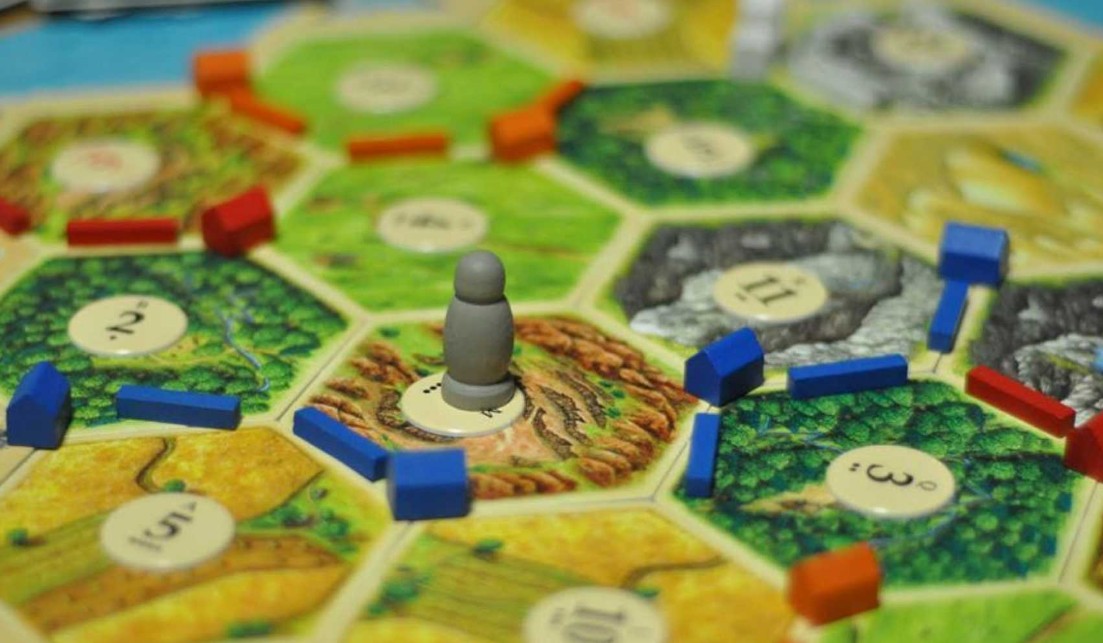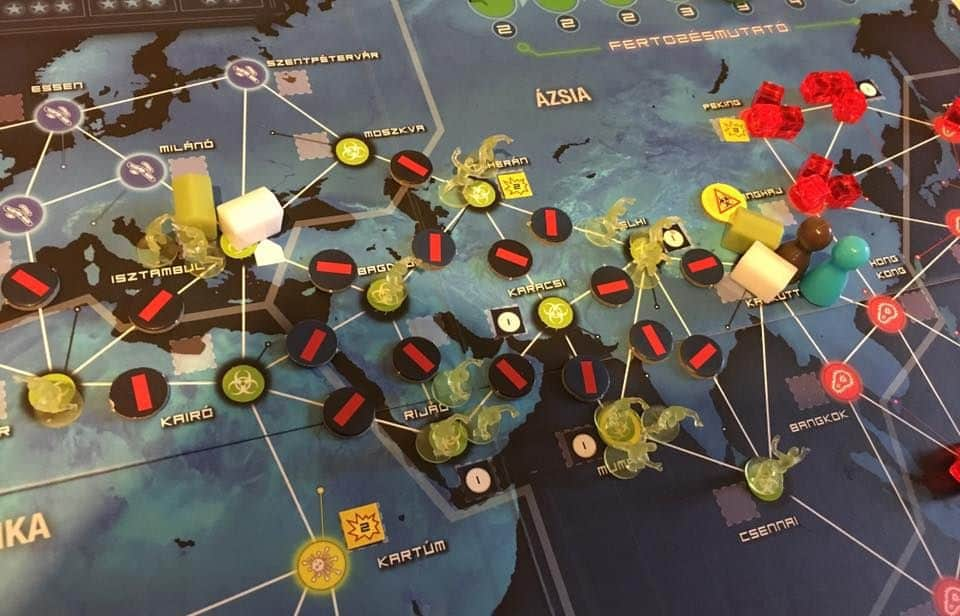
Wingspan, at its core, is a game about building a bird sanctuary. Hatch a plan to collect food, eggs, and cards to amass the most points and complete objectives before your opponent(s). But don’t just wing it–Wingspan sets you up to synergize abilities and bonuses, creating the most powerful conservatory in the world.
Wingspan is grounded in real science, providing in-depth traits about each bird as well as (if you have the online version) their harmonious call. But with the ever-expanding roster (or should I say rooster?) of birds and their abilities, which ones should you devote your time and energy to? Which ones will set you up for success and leave you flying high? Which birds should you take another gander at and welcome into your nest?
Here are my top ten avian avatars to collect in Wingspan and prove you’re no fledgling.
10. American White Pelican

Image courtesy of Wingspan (via Steam) by Stonemaier Games
The American White Pelican strikes a strong and recognizable figure. With its massive beak and large stature, it will prominently stand out in both its natural habitat and your hand of cards. In addition to its looks, the American White Pelican will grant a hefty boost to your sanctuary.
Balancing your resources and point total is the core of Wingspan’s strategy. The American White pelican makes this a bit easier by giving you a point boost through tucked cards. You can tuck two cards each time it is activated, so make sure to visit the wetland often!
As one of the larger birds in the game, I like to bulk up my sanctuary with the American Pelican and other heavy hitters. It provides a decent amount of points for a reasonable price of two food. In addition, real-life pelicans team up when hunting fish to gather them in their large beaks.
What's Great About the American White Pelican...
- Tuck Two: You gain points at the end of the game for each card tucked behind a bird. The American White Pelican’s ability allows you to tuck two cards each time you activate its ability!
- Stock up on food: It can be annoying to wait for your opponent to reroll the birdfeeder or take food you didn’t want. The American White Pelican’s ability reduces potentially unwanted food by giving you a constant use for fish.
- Significant points for minimal expense: Any bird worth 4+ points is usually a good bird to invest in. The American White Pelican only costs two fish to play, so it won’t take you long to build up the expense!
American White Pelican details:
- Points: 5
- Food cost: 2 fish
- Habitat: wetland
- Nest type: ground
- Number of eggs: 1
- Ability:
- When activated (brown):
- Discard a [fish] fish to tuck 2 [card] cards from the deck behind this bird.
- When activated (brown):
American White Pelican Power rating: 65/100
9. Gray Catbird

Image courtesy of Wingsplain: The Leading Wingspan Strategy and Competitive Play Site and Stonemaier Games
The Gray Catbird, despite its lack of feline features, is a gorgeous bird. It earned its name from the catlike sound it makes, mimicking other creatures. In Wingspan, it plays support, granting an additional use of a buddy’s activated abilities.
Each brown ability can only be activated when you take your turn in its habitat–forest abilities can only activate when gaining food, etc. The Gray Catbird still maintains this requirement, but it allows you to double dip on one ability, potentially granting you an extra tucked card or food token. In addition, you can place it in any habitat, allowing you to repeat the brown power on any bird in your sanctuary.
I love to activate abilities that synergize with each other; when you can stack abilities, you can essentially take multiple turns in one round. The Gray Catbird allows you to activate another brown ability twice in the same turn. You can also mix and match what you want each turn, letting you swoop over to another bird’s ability. The Grey Catbird’s stats aren’t too shabby either–a card with five points and access to all habitats is one you’ll want to take a gander at!
What's Great About the Gray Catbird...
- Repeat brown power: Repeating a brown power can be exponentially effective if you synergize it with other abilities like hunting or gaining food. Even abilities that cost food or an egg/card can be particularly useful if you have a decent stockpile.
- Pay more for large payoff: While it does cost three food total, the payoff for the Gray Catbird is more than worth it. Each turn grants you a bonus ability which you can swap out depending on your needs.
- More points: Five point birds are valuable cards. With limited spaces in each habitat, it would be wise to fill them up with the highest point values as possible
- Any habitat: The Gray Catbird can be played in any habitat, giving you the option to boost your desired habitat’s ability or avoid overcrowding. In addition, it can be placed strategically to double the brown abilities of any other bird.
Gray Catbird details:
- Points: 5
- Food cost: 1 invertebrate + 2 fruit
- Habitat: any
- Nest type: bowl
- Number of eggs: 3
- Ability:
- When activated (brown):
- Repeat a brown power on one other bird in this habitat.
- When activated (brown):
Gray Catbird Power rating: 69/100
8. Anna’s Hummingbird

Image courtesy of Wingspan (via Steam) by Stonemaier Games
What beautiful colors! Anna's Hummingbird is a sight to behold, showing off a dazzling plumage of pinks, blues, and yellows. In Wingspan, they also grant all players extra food, allowing the owner to briefly collaborate with other players.
Anna’s Hummingbird is a well-balanced card. Worth four points yet only costing one food of any type, it can be played in any habitat to allow you to boost one area to the next level. Its ability to grant one food die to each player is very helpful as well, since you’ll be returning to the birdfeeder regularly. If there’s a food you like, you can have first pick; if not, hand the first choice off to another player and potentially reroll the dice.
For such a small bird, Anna’s Hummingbird is full of energy. They dive from up to 100 feet in the air when mating, showing off their vibrance and beauty. Their diet is as varied as their feathers, eating seeds to fruits to fish.
What's Great About Anna's Hummingbird...
- More food: Anna’s Hummingbird grants you and your opponents an extra food die, giving you more resources to build a bigger sanctuary.
- Reroll birdfeeder: Gaining more food die means you can reroll the birdfeeder even faster. If you have a large group playing, this will speed up even more!
- You hold the power: Even though it helps out your opponent, you can choose who takes a food die first. If you were waiting on a reroll but need to take one more food die, you can make your opponent take the unwanted die and reroll for what you really want. If not, you have first dibs on any of the food dice.
- Any habitat: Placing Anna’s Hummingbird in the forest will give you a bonus food for every time you take food, but placing them in any other territory gives you free food when collecting eggs or bird cards.
Anna’s Hummingbird details:
- Points: 4
- Food cost: 1 any
- Habitat: any
- Nest type: bowl
- Number of eggs: 2
- Ability:
- When activated (brown):
- Each player gains 1 [die] food die from the birdfeeder, starting with the player of your choice.
- When activated (brown):
Anna’s Hummingbird Power rating: 73/100
7. Crimson Chat (OE)

Image courtesy of Australian Geographic, image credit Laurie Boyle
The Oceania Expansion pack added the brilliantly vibrant Crimson Chat to the flock! With a scarlet head and belly, the Crimson Chat displays its bold, striking colors to the world. They have a chattering call, lending to their name. In addition to their colors and voice, their flocking ability within Wingspan allows them to tuck cards, stockpiling end-of-game points for the player.
Like the American White Pelican, the Crimson Chat can also tuck cards. They can only tuck one card at a time, but they do not have a specific food cost to do so. Instead, you can spend any food to gain a bonus point. As a four point card with a cost of only one food, the Crimson Chat is worth adding to your nest.
Linking cards with a tuck ability is incredibly powerful. Just like eggs, each tucked card will grant you points at the end of the game. Unlike eggs, you never have to spend these points! You will need more eggs as you expand your sanctuary, though, so the Crimson Chat being situated in the grasslands will come in handy quite often.
What's Great About the Crimson Chat...
- Make unwanted food useful: There’s always that one bit of food you can’t find a use for. The Crimson Chat allows you to spend your unwanted food to gain a bonus point from the deck.
- Tuck card: Tucking cards is always great because it adds to your final score. Gain a bonus tucked card each time the Crimson Chat’s ability activates.
- No caveats to tuck: Many of the tucking card abilities involve measuring wingspans or spending a card from your own hand, which is often small enough as it is. Crimson Chat waives this requirement, allowing you to tuck any card from the deck.
Crimson Chat details:
- Points: 4
- Food cost: 1 invertebrate/seed/fruit
- Habitat: grassland
- Nest type: bowl
- Number of eggs: 2
- Ability:
- When activated (brown):
- Discard 1 [wild] of any food to tuck 1 [card] card from the deck behind this bird.
- When activated (brown):
Crimson Chat Power rating: 77/100
6. Green Heron

Image courtesy of Wingspan (via Steam) by Stonemaier Games
Sleek and lanky, the Green Heron stands tall and proud. They’re natural anglers, scattering their own forms of bait into their waters to lure a fish dinner. In Wingspan, their ability also focuses upon swapping one food for another: you can switch any unwanted food for another type.
Unlike eggs and tucked cards, extra food doesn’t count towards bonus points. If you don’t spend it, you lose it. The Green Heron allows you to exchange one unwanted food for a different one. No need to worry about the birdfeeder, either–you can trade food straight from the supply.
Green Herons are migratory birds, flying south to the coast when the weather gets cold. They enjoy the wetlands, areas full of fish to feed upon. You’ll be returning to your Wingspan wetland often after playing the Green Heron! Trading out food is a gamechanger, especially if the birdfeeder is not in your favor.
What's Great About the Green Heron...
Trade in food: Sometimes, the birdfeeder rolls are not kind and you are left with–another seed, really? The Green Heron allows you to trade in unwanted food for the pieces you really want.
Gain any food you need: Not only does the Green Heron allow you to trade in food, but you can trade any food type to gain any food you want! So if you pick up–another grain, seriously?–you can trade it in for the food you need.
Gain food in wetland: One of the core gameplay loops of Wingspan requires you to spend your turns wisely, only pursuing the resources you really need. The Green Heron makes this a little easier by allowing you to swap food in the wetland.
Green Heron details:
- Points: 4
- Food cost: 1 invertebrate/fish
- Habitat: wetland
- Nest type: platform
- Number of eggs: 3
- Ability:
- When activated (brown):
- Trade 1 [wild] of any food for any other [wild] of any food from the supply.
- When activated (brown):
Green Heron Power rating: 80/100
5. Downy Woodpecker

Image courtesy of Wingspan (via Steam) by Stonemaier Games
Downy Woodpeckers are common visitors to avid bird watchers and backyard enthusiasts alike. From seeds to insects, they will appear wherever the feed is and often will join flocks of other species. In Wingspan, they bring an extra friend along to join your sanctuary.
While it does take some planning ahead and resource management, the ability to play two birds at once can propel you into the lead. If your forest habitat is falling behind and you want to advance to a higher level, the Downy Woodpecker lets you play two birds in a single turn. This will give you more food to purchase birds for other habitats and stack your abilities/points.
I love watching the woodpeckers in my neighborhood. They often hang around the old trees to search for insects hidden just below the surface. With a single food cost, the Downy Woodpecker will also allow you to spend time searching for the golden cards hidden within the deck.
What's Great About the Downy Woodpecker...
- Two birds with one stone: Playing two birds in one turn is like taking a second turn! Even though both birds still require their food cost and you can only perform this action once, this can be a gamechanger if you plan ahead.
- Forest birds=more food: Playing another bird into your forest means you can draw even more food dice in a single turn. Synergize this ability with other birds like the American White Pelican or Crimson Chat to boost your endgame point total.
- Variety in food cost: The Downy Woodpecker costs only one food. While it will not eat any food, it will eat half or over half of the food options, giving you some wiggle room to spend on unwanted food.
Downy Woodpecker details:
- Points: 3
- Food cost: 1 invertebrate/seed/fruit
- Habitat: forest
- Nest type: cavity
- Number of eggs: 2
- Ability:
- When played (white):
- Play a second bird in your [forest] forest. Pay its normal cost.
- When played (white):
Downy Woodpecker Power rating: 82/100
4. Franklin’s Gull

Image courtesy of Wingspan (via Steam) by Stonemaier Games
Franklin’s Gull is a marsh-dwelling bird, creating floating nests to stay aloft even in waterlogged habitats. They hide a rosy glow to their underbelly, giving the impression of a dove-like coloring when flying overhead. In Wingspan, they give the player opportunities to draw even more cards to boost their hand.
Franklin’s Gull is widely considered as one of the most effective cards in the game. While not worth many points, it allows you to draw cards at an incredible rate, opening up more options for gameplay. They can live in the grassland as well as the wetland, potentially bypassing the need to spend turns drawing additional cards in the wetland. Their star nest also allows them to count toward end-of-round bonuses or cards requiring specific nest types.
A bird like Franklin’s Gull is always a good idea to have around. I often waste several turns just trying to draw a bird card that will help my sanctuary grow, or even line up with my available resources. Franklin’s Gull ensures that you will be soaring above the competition, stuffing your hand full of new birds.
What's Great About Franklin’s Gull...
- More cards: More bird cards means more options to enhance your sanctuary (and more abilities to synergize!). Increasing your hand size also allows you to utilize abilities that cost a card from your hand.
- Cost of one egg: Even from the start of the game, you can lay multiple eggs at a time. The Franklin’s Gull ability costs one egg, one of the least expensive deals of the game.
- Star nest: Franklin’s Gull has the special star nest, meaning it can count towards any end-of-round objective or bonus card requiring birds of a certain nest type.
- Pair with abilities to spend cards: Some bird abilities require you to spend a card. With Franklin’s Gull, you’ll always have a surplus of cards to use in both your sanctuary and as extra currency.
Franklin’s Gull details:
- Points: 3
- Food cost: 1 fish + 1 any
- Habitat: grassland/wetland
- Nest type: star (any)
- Number of eggs: 2
- Ability:
- When activated (brown):
- Discard 1 [egg] egg to draw 2 [card] cards.
- When activated (brown):
Franklin’s Gull Power rating: 87/100
3. Common Raven

Image courtesy of Wingspan (via Steam) by Stonemaier Games
Ravens are symbols of death and rebirth. Upon consumption of dead animals, they represent cleansing and new beginnings. In Wingspan, they grant you the food to begin your sanctuary anew or bolster its sturdy foundation.
Wise players keep an eagle eye open for any ravens that come their way. Worth five points, the Common Raven offsets its steep food cost with the ability to gain two food of any kind upon activation. In addition, it can be placed in any habitat, allowing you to gain whichever food you need even when you’re laying eggs or drawing birds.
Ravens have always intrigued me. They are incredibly smart birds, being able to pick up on patterns and behavior. You’ll be an incredibly smart player if you decide to add the Common Raven to your sanctuary! It will streamline your strategy, giving you extra turns to focus upon other resources and bonuses.
What's Great About the Common Raven...
- Two food: Abilities that give food typically only provide one piece per activation. With the Common Raven, you gain not only one but two pieces of food, saving you an entire turn!
- Food from supply: You’re at the mercy of the dice when you gain food normally. The Common Raven’s ability lets you take food straight from the supply, giving you the pick of the crop.
- Cost of one egg: Like Franklin's Gull, the Common Raven’s ability only costs one egg. Even from the start of the game, you can lay multiple eggs at a time. This makes the Common Raven’s ability one of the least expensive deals of the game.
- Any habitat: Common Ravens can live anywhere! Mix and match where you place your bird each game, giving you the option to boost your desired habitat’s ability or avoid overcrowding.
- High points: As a five point card, the Common Raven is a difficult bird to pass up. Placing one in your sanctuary will prime you to become the best conservationist around.
Common Raven details:
- Points: 5
- Food cost: 1 rodent + 2 any
- Habitat: any
- Nest type: platform
- Number of eggs: 2
- Ability:
- When activated (brown):
- Discard 1 [egg] egg from any of your other birds to gain 2 [wild] of any food from the supply.
- When activated (brown):
Common Raven Power rating: 91/100
2. Crows (American and Fish)


Images courtesy of Wingspan (via Steam) by Stonemaier Games
With an iridescent black sheen and a cunning little mind, crows are the loud, intelligent birds we all know and (maybe) love. They are one of the powerhouses of Wingspan, worth upwards of six points upon playing alone. In addition, the American and Fish Crows each grant a bonus food from the supply at the cost of just one egg.
Out of all the crow abilities in Wingspan, I believe the ability to gain food to be the most useful. Sure, you could cache food or wait for an end-of-round ability, but other cards can do the same. The American and Fish Crows stand out because they are both worth a significant amount of points and can propel your game forward, showering you with valuable resources.
Whatever your opinion of them, crows are our neighbors and companions. But did you know there are many different species of crows? Wingspan alone features six crow variants with different abilities and features. Fun fact about one of my favorites: the Fish Crow, despite its name, is an omnivore!
What's Great About Crows...
- High points: Both the American and Fish Crows offer high points. With a low food cost to play and a very useful ability, crows are some of the best birds in the game.
- Food from supply: Food from the birdfeeder limits you to the luck of the dice. Food from the supply allows you to choose your own fate, building your sanctuary however you want.
- Cost of one egg: Like Franklin's Gull and the Common Raven, the Crows’ abilities only cost one egg. Even from the start of the game, you can lay multiple eggs at a time. This makes the Crows’ abilities one of the least expensive deals of the game.
- Synergize: Pair up this ability with that of birds who grant eggs each turn to create a positive feedback loop of bountiful resources.
American/Fish Crow details:
- Points: 4 (American), 6 (fish)
- Food cost: 1 any (American), 1 fish + 1 any (fish)
- Habitat: any (both)
- Nest type: platform (both)
- Number of eggs: 2 (both)
- Ability:
- When activated (brown):
- Discard 1 [egg] egg from any of your other birds to gain 1 [wild] of any food from the supply.
- When activated (brown):
Crow Power rating: 93/100
1. Barred Owl/Northern Harrier/Cooper’s Hawk/Red-Shouldered Hawk


Image courtesy of Wingspan (via Steam) by Stonemaier Games
Raptors or birds of prey are symbols of focus and messages of wisdom. Owls are known for their intelligence and stealth, while hawks are representative of confidence and leadership. In Wingspan, these birds take on the role of hunting, stockpiling points for the player through tucked cards.
Hunting birds are excellent in Wingspan and are one of my favorite cards to play. They allow you to tuck cards, gain resources, and ultimately utilize the entire deck. These particular birds of prey hunt small birds, searching for the more readily available prey throughout the deck. If you can line up multiple hunting birds in a row, you’ll be able to practically comb the deck for end-of-game bonus points. It can be fun to see what kinds of prey your raptor caught (or at least tried to catch!).
While each of these birds in Wingspan possess the same ability, their real-life counterparts are vastly different! For example, Barred Owls are known for their silent flight and hoot, sounding distinctly like “who cooks for you?” Northern Harriers fly low rather than high when they’re on the hunt. Raptors are truly as varied and as interesting as the feathers on their back!
What's Great About the Barred Owl/Northern Harrier/Cooper’s Hawk/Red-Shouldered Hawk...
- Hunting: The predator’s hunting ability is one of my favorite mechanics in Wingspan. Drawing upon the natural hunting abilities of birds of prey, hunting in Wingspan allows you to gain more food or tucked cards, boosting your resources or point total.
- Tuck cards: These predators hunt to capture and tuck cards behind your birds. Each tucked card grants an additional bonus point at the end of the game.
- Large variety of small birds: While other hunting abilities may search for food or birds with large wingspans, these birds of prey hunt for small birds. Wingspan has a wide variety of birds with small wingspans, making it likely for you to draw the best card.
- Stack multiple birds with ability: I have played several games where I filled up my sanctuary with hunting birds. When you line them up within a single habitat, like the forest, you can activate their ability each time you visit the area.
- Low food cost: Who doesn’t like ‘cheep’ cards? For the quality of their abilities, these birds are a steal!
Barred Owl/Northern Harrier/Cooper’s Hawk/Red-Shouldered Hawk details:
- Points: 3 (all)
- Food cost: 1 rodent (all)
- Habitat: forest (barred, cooper’s, red-shouldered), grassland/wetland (harrier),
- Nest type: cavity (barred), platform (harrier, cooper’s, red-shouldered)
- Number of eggs: 2 (all)
- Ability:
- When activated (brown):
- Look at a [card] card from the deck. If <75cm, tuck it behind this bird. If not, discard it.
- When activated (brown):
Barred Owl/Northern Harriet/Cooper’s Hawk/Red-Shouldered Hawk Power rating: 95/100








